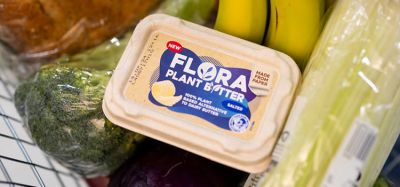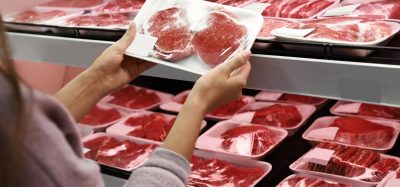The right side of the law
- Like
- Digg
- Del
- Tumblr
- VKontakte
- Buffer
- Love This
- Odnoklassniki
- Meneame
- Blogger
- Amazon
- Yahoo Mail
- Gmail
- AOL
- Newsvine
- HackerNews
- Evernote
- MySpace
- Mail.ru
- Viadeo
- Line
- Comments
- Yummly
- SMS
- Viber
- Telegram
- Subscribe
- Skype
- Facebook Messenger
- Kakao
- LiveJournal
- Yammer
- Edgar
- Fintel
- Mix
- Instapaper
- Copy Link
Posted: 4 January 2012 | John Hammond, Head of Information & Legislation, Campden BRI | No comments yet
Food legislation is highly complex and impacts on all aspects of the food industry from production, packaging to distribution and marketing. Food laws are a vital element in industrialised and developing countries alike, ensuring the food that consumers purchase and eat is safe and has been marketed honestly.
It is the role of government and its agencies to protect the population from both harm and unfair practices. This is achieved through properly enforced food control measures based on comprehensive, well-defined regulation covering the quality and safety of food and its transparent and honest presentation to the consumer.
According to the Food and Agriculture Organisation of the United Nations and World Health Organisation1, food control is defined as:
“A mandatory regulatory activity of enforce – ment by national or local authorities to provide consumer protection and ensure that all foods during production, handling, storage, processing and distribution are safe, wholesome and fit for human consumption; conform to safety and quality requirements; and are honestly and accurately labelled as prescribed by law.”
Food legislation is highly complex and impacts on all aspects of the food industry from production, packaging to distribution and marketing. Food laws are a vital element in industrialised and developing countries alike, ensuring the food that consumers purchase and eat is safe and has been marketed honestly. It is the role of government and its agencies to protect the population from both harm and unfair practices. This is achieved through properly enforced food control measures based on comprehensive, well-defined regulation covering the quality and safety of food and its transparent and honest presentation to the consumer. According to the Food and Agriculture Organisation of the United Nations and World Health Organisation1, food control is defined as: “A mandatory regulatory activity of enforce - ment by national or local authorities to provide consumer protection and ensure that all foods during production, handling, storage, processing and distribution are safe, wholesome and fit for human consumption; conform to safety and quality requirements; and are honestly and accurately labelled as prescribed by law.”
Food legislation is highly complex and impacts on all aspects of the food industry from production, packaging to distribution and marketing. Food laws are a vital element in industrialised and developing countries alike, ensuring the food that consumers purchase and eat is safe and has been marketed honestly.
It is the role of government and its agencies to protect the population from both harm and unfair practices. This is achieved through properly enforced food control measures based on comprehensive, well-defined regulation covering the quality and safety of food and its transparent and honest presentation to the consumer.
According to the Food and Agriculture Organisation of the United Nations and World Health Organisation1, food control is defined as:
“A mandatory regulatory activity of enforce – ment by national or local authorities to provide consumer protection and ensure that all foods during production, handling, storage, processing and distribution are safe, wholesome and fit for human consumption; conform to safety and quality requirements; and are honestly and accurately labelled as prescribed by law.”
If operated effectively, consumers will have confidence in the safety and integrity of the food supply chain and be able to make informed decisions about the foodstuffs they wish to buy. Recent food scares involving Escherichia coli and Salmonella, instances such as adulteration with melamine, and the possibility of malicious attacks, highlights the challenges involved in assuring food safety and maintaining consumer trust.
Such scares are indicative of the type of complex challenges faced by food businesses and control authorities, which include:
● New and emerging foodborne hazards
● Innovative food production technologies
● Changes in lifestyles and shifting consumer behaviour and demands
● Globalisation of the food supply chain and the need for harmonisation of food safety and quality standards
● Increasing consumer awareness about food safety and quality issues, and demands for more information about the food chain
The disparate nature of the food industry makes food control particularly challenging. The sector encompasses many small-scale operations as well as large-scale producers plus individual and multiple retailers and food service providers. Furthermore, food processing and packaging can be minimal or highly sophisticated.
With the long-awaited EU Regulation 1169/2011 on the Provision of Food Information to Consumers finally published on 22 November, it is vital that all those in the food chain understand and plan to meet the new rules and regulations governing the industry.
What’s in a label?
Accurate labelling is important in that this is the main channel by which consumers get information about the food they purchase. The information needs to be consistent, accurate and not mislead consumers, so they can make informed choices about the foods they are buying.
The new Food Information Regulation (FIR) represents the most significant change to food labelling rules for a generation. It has been agreed after much debate – extensive formal negotiations began in February 2008 to bring general and nutrition labelling together into a single regulation and to modernise, simplify and consolidate existing labelling legislation. The task of simplifying, updating and re – packaging the rules on food labelling into a regulation applicable across all 27 Member States has been an extremely complicated and time consuming process.
The aim of the FIR is to provide a basis for consumers to make informed food choices that suit their dietary needs and to prevent any industry practices that may misinform or confuse consumers. The Regulation is directly applicable in all Member States, in due course completely replacing existing labelling legislation in the UK.
The most far-reaching changes are those relating to nutrition labelling of pre-packed foods. There is now a requirement for a ‘mandatory back of pack nutrition declaration’, comprising energy (in both kJ and kcal), fat, saturates, carbohydrates, protein, sugars and salt as well as any nutrients mentioned in claims. Voluntary ‘front of pack’ information will continue for energy, fat, saturates, sugar and salt, along with GDAs per portion, but the use of additional forms of expression such as ‘traffic light’ schemes will be restricted.
Country of origin
Declaration of the country of origin of food products on labels has received much attention from consumers and the media in recent years, as more interest is taken in where food comes from, including issues such as local sourcing, ‘food miles’ and production practices.
COOL (country of origin labelling) can sometimes be potentially confusing to con – sumers, particularly where the origin or provenance of food products and its primary ingredients differ.
For example, ‘British Sausages’ which have been processed and made into sausages in the UK but are made from imported meat can cause confusion among consumers. Last year, in the UK, new industry-owned guiding voluntary principles on country of origin labelling formalised measures that provide consumers with clear, accurate information on the origin of their food.
The Principles on Country of Origin Information were developed by key bodies representing food retailers, food manufacturers, commercial caterers and the hospitality trade, and are based on the labelling best practices of top performers in the food chain.
They apply to meat, processed meat products and milk, fresh cream, cheese and butter. They ensure that the term ‘British’ can only be used for meat from animals born and reared in the UK and that liquid milk and fresh cream are labelled with the country of origin of the milk.
Earlier this year, Campden BRI undertook a Defra-commissioned survey into the uptake of the Principles. The study reviewed the labels of over 500 meat and dairy products purchased from major supermarkets, con – venience stores, discounters and co-ops. The findings showed that the majority of meat and dairy products on sale in the UK now feature information on where ingredients come from or where they are produced.
While the results constitute clear evidence that the food industry is providing more country of origin labelling, they also identified some scope for improvement. For example nearly 20 per cent of bacon, sausages and other lightly processed meat products, did not include any origin statement, while for ready meals and more complex meat products, 24 per cent did not provide country of origin information.
The Food Information Regulation makes COOL compulsory for all fresh and frozen meat and when origin claims are made for meat products and the origin of the main ingredient is different to the claim. The Commission is also examining the case for a future extension of mandatory labelling to ‘single ingredient’ products and milk and dairy products.
Controlling food additives
Since the early 1990s, there has been a drive to modernise the way food is regulated at European Community level. As part of this, the legislation on food additives should make it easier for food and drink manufacturers to identify which additives are permitted in what foods.
A simplified and common approval system for food additives, flavourings and enzymes, based on the scientific opinions from the European Food Safety Authority (EFSA), is already in place and, for the first time, a framework for harmonised rules on food enzymes has been developed.
An important part of the new legislation that was formally published on 12 November is the introduction of a new Food Categorisation System (FCS). It comprises around 18 food categories and well over 100 sub-categories, with the permitted additives and associated maximum levels of use being listed for each.
To ensure quicker decisions on changes to the authorised lists of additives, a new streamlined committee system has already been put in place.
Food enzymes have, up until now, been primarily regulated by specific national laws or general EU controls. Regulation 1332/2008, however, will introduce specific EU legislation for enzymes for the first time and, in the fullness of time, see the launch of a positive list of permitted food enzymes that can be placed on the market and used in food. The regulation does not apply to:
● Enzymes used for nutritional and digestive purposes
● Microbial cultures
● Enzymes used in production of food additives or processing aids
In all other cases, food manufacturers will be required to demonstrate that there is a technological need for the use of the enzymes in the food, to ensure that their usage is completely safe and does not mislead the consumer.
It is unlikely that the full requirements of the new regulation for enzymes and the approved, positive list will be completed before 2014.
As with all new regulations, however, the phased introduction of specific measures will provide time and flexibility for food manu – facturers to adjust their activities to meet the new requirements.
Keeping up to speed
Keeping up with rapidly changing legislation and getting to grips with new regulations can be difficult, expensive and time consuming.
Fortunately, Campden BRI has an experi – enced Food Law Advisory Team with specialist knowledge that can advise food businesses and others on the implications of new and existing food labelling laws. For example, eFLaN is our essential on-line electronic reference guide to UK and EU food law, codes of practice and guidance – a first point of call for many wanting to check the legislation.
More specific help to get to grips with the new Food Information Regulation is also available though a tailored label review service, advising on all aspects of food labelling and forewarning of any potential difficulties with current or future controls.
A re-run of our sell-out December briefing Seminar on the Food Information Regulation has been organised for 20 January, for those who missed out on the December event.
This is complemented by in-depth company briefing days for technical, regulatory and marketing staff to assess the impact of the new controls on their business and to help in the design of the most efficient and effective change programmes.
For more information, visit http://www.campden.co.uk/services/ food-labelling-guidance.htm
Reference
1. Joint World Health Organisation / Food and Agriculture Organisation report on Assuring Food Safety and Quality: Guidelines for Strengthening National Food Control Systems (2003)
Biography
Originally trained as a food scientist, John Hammond is now Head of Information & Legislation at Campden BRI. He is responsible for the provision of technical information services, including advice, publications and training on food law. He began his career at the Laboratory of the Government Chemist, developing methods of analysis to help support the enforcement of food legislation. In 1995, John joined the Flour Milling and Baking Research Association (FMBRA) before the organisation merged with Campden Food and Drink Research Association. Prior to that, he worked for 11 years at the Food and Drink Federation involved in the development of many aspects of food legislation. [email protected]







